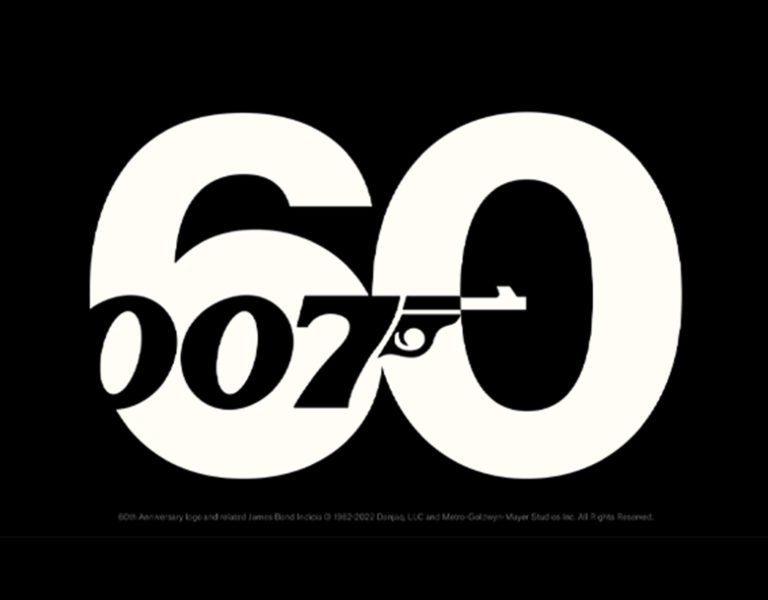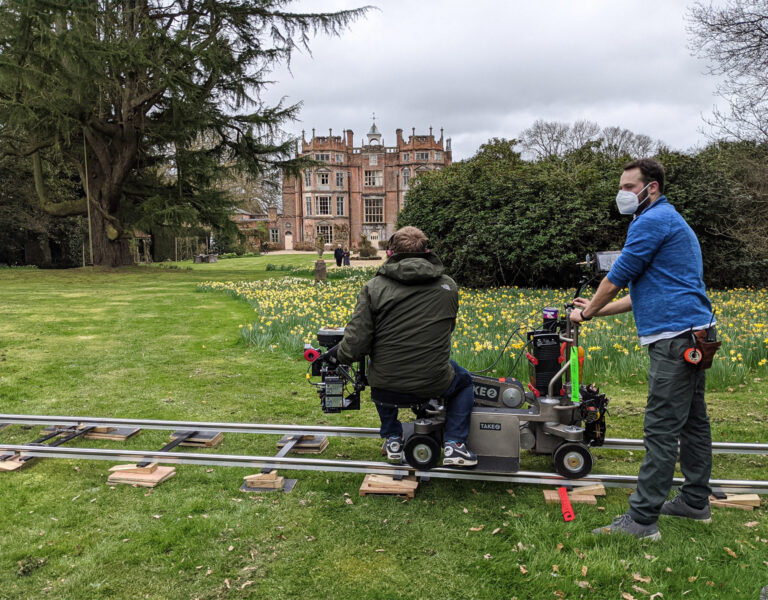Reindeer games
Challenged with defrosting a Christmas classic, cinematographer James Oldham was up for the task.
Four-legged fantasy drama Prancer charmed a generation of children when it bounded onto screens in 1989. Over 30 years on, it was time to reignite the festive magic in Prancer: A Christmas Tale, starring young actor Darcey Ewart alongside the legendary James Cromwell. British DP James Oldham tells us how he helped bring a fresh cinematic vision to the project, filmed in wintery Romania.
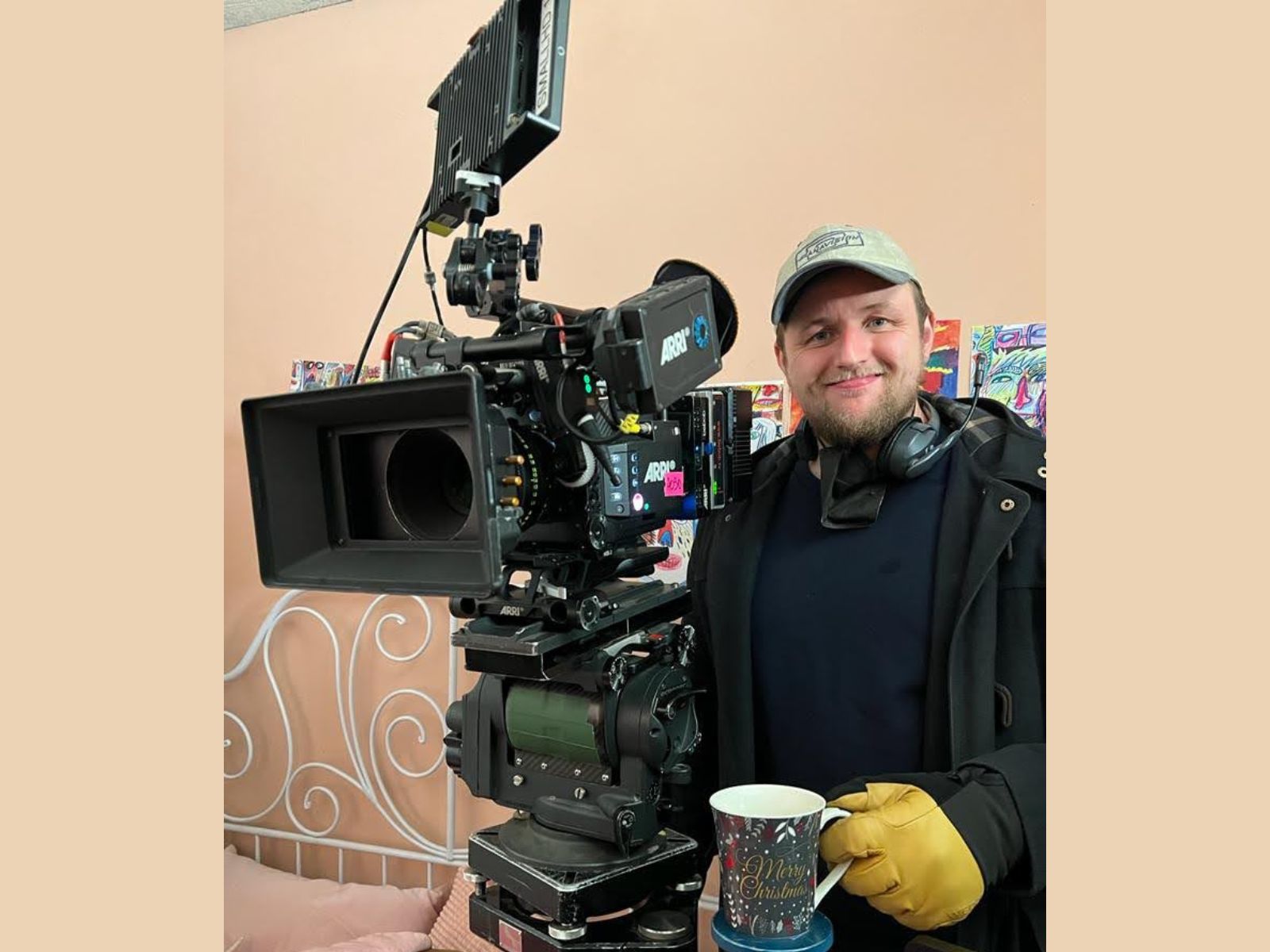
Hi, James! Tell us about your road to becoming a DP.
For me, my journey started the same way that I guess many DPs journeys started, growing up through the 90s: I found my dad’s camera at a young age, and started pressing the big red button on the back of it! Curiosity turned into inquiry, and inquiry into learning. My first real short was shot in 2012, called The Flying Lesson directed by Phil Hawkins, for which I was awarded ‘Best Emerging Cinematographer’ by the BSC in 2015. Since then, I’ve been plugging away and making a living doing this thing that we all love.
How did you get involved with Prancer: A Christmas Tale?
I received a call from director Phil Hawkins who had got the gig for his first studio film with Universal/Sky. Raffaella De Laurentiis was producing the film and was keen to get a younger DP involved. So that was it, before I knew it, I was packing my bags and on a plane to Romania in January of 2022
Tell us about your initial conversations with Phil about the look for Prancer: A Christmas Tale. What was his vision and what new ideas did you bring to the discussion?
Phil was keen to go for a Spielbergian approach, both in terms of camera movement, shot choice/movement and lighting. Inspired by Janusz Kamiński ASC’s work, we employed lots of heavy backlight, but also soft (often through muslin) key lights. Good blocking, and a few oners for good measure. Purposeful camera movements were key, and I was happy to employ this visual style that I hold in such high regard.
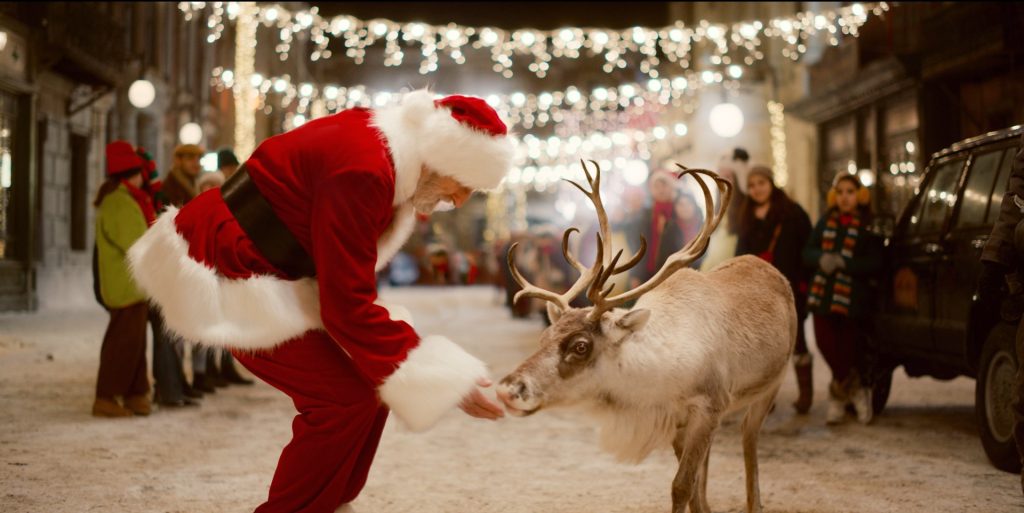
What were your creative inspirations and references for the film? Did you watch the original or did you want to go into this film with a fresh approach?
Story-wise, our approach was inspired by films like Pixar’s Up and ET. Visually, we wanted to keep this film away from how you might expect a usual Christmas film to look, and really leaned into more moody and magical lighting. During prep in Romania, me and Phil watched various films, discussing how we wanted things to feel and appear. Lincoln was one such film! That heavily influenced our thinking.
We did watch the original, but wanted to bring a fresh approach and create a reimagining of the original Prancer. We had Raffaella [producer of the original Prancer] as our producer who is an absolute legend, and a force to be reckoned with. She had many anecdotes and helpful tips about the practical aspects of working with reindeer in cold weather etc. from her experience in making the original. She became a good friend through the production and was a constant guiding force for us whilst making the film.
What did the pre-production process entail and how long was it? What research and tests were carried out?
Due to COVID, we spent all of our prep time in a bubble in Romania, so prep was very intentional and deliberate. I think we did four weeks prep. Effectively everything was a build on the film, so between our exterior house in the hills of Transylvania, and our set build of the family home and ‘Bet and Bud’s Store’ on Castel’s backlot, a lot of prep was deciding how and where things would be lit and placed in advance. The biggest lighting setup was on the Main Street where we had to sequence all the fairy lights in order to have full control of each row of lights.
Imagining blocking scenarios, camera positions and lighting setups was a key part, and each location was meticulously scouted, with diagrams of setups to match each scene of the film. I had an office on the lot, so spent much of my time in there creating mood boards, lighting setups and determining what was required to fulfil each day of the shoot.
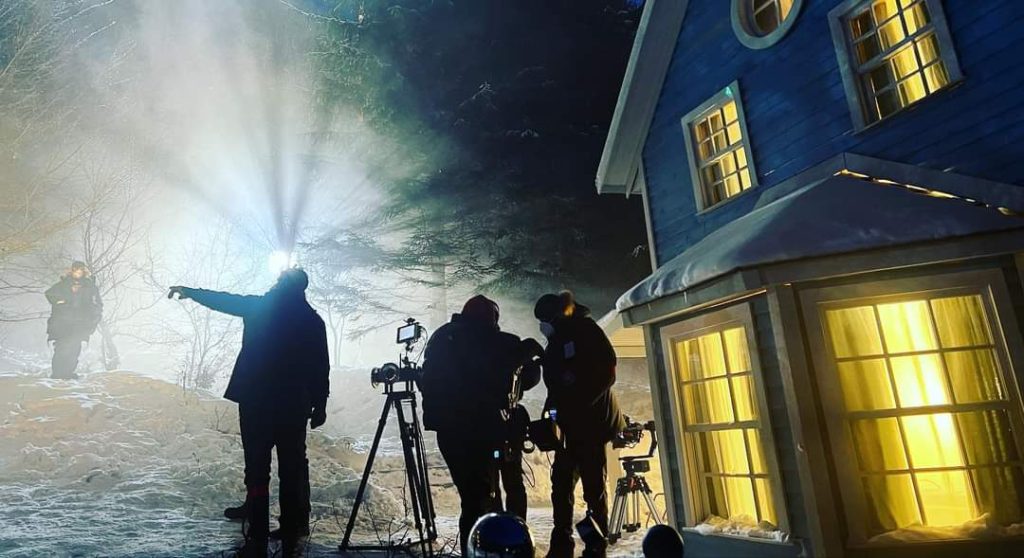
When did principal photography begin and end?
Principal photography ran from the first week of February through until mid-March. So it was nice and chilly!
Where were the key filming locations?
We split our time between exterior shots in the mountains in Brasov, the backlot at Castel and a little in Bucharest.
What was the most challenging location to shoot at?
Lighting and shooting the large forest chase sequences was definitely the most challenging logistically. The main challenge being effectively how far back and how high up could we get the 18ks!
Did the snow and cold weather pose any challenges to the production, especially to your equipment?
We didn’t seem to encounter too many cold weather problems. Aside from batteries failing, bulbs blowing up, lights being blown around in high winds, and cards corrupting, it was quite manageable. In fact, we did have the opposite problem of snow starting to melt towards the end of the shoot, so we had to bring in snow bought from the local ski resort.
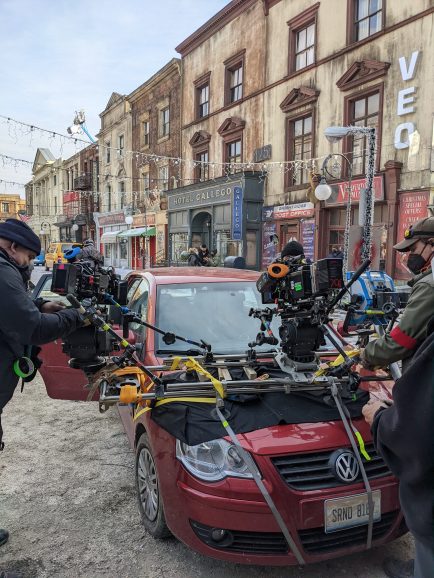
Tell us about your camera choice.
We shot on the Mini LF (A) and Mini (B). We rented the camera and lighting equipment from both Cutare Film and Castel Film respectively. Raffaella had good relations already with those in Romania, so it was decided to use local suppliers.
What about your choice of glass – what look did your lenses help you achieve?
During prep, one of our main conversations with the studio was whether we would frame for 2.39:1 or not. We explored using the Technovision FF glass, which was beautiful in testing, but we felt overall it would be more sensible to frame 2.1 with spherical glass, especially with the extreme height difference between our leads James Cromwell and Darcey Ewart. Our main testing ended up being between the Supremes and the Supreme Radiance which I had heard good things about. During testing, the Radiance flares felt far too distracting for our story, and the flares of the Supremes were far more subtle. Another consideration was the feel of fairy lights in the background, and the Supremes looked absolutely stunning wide open, where the bokeh in the background would almost create a frame in a frame. So that was the decision made!
What was your approach to using camera movement to aid the storytelling?
We did always try to use motivated movements, letting characters bring the camera into the scene. For both Phil and me, it was important for the camera to not get in the way of the performances too much. That being said, at times the camera almost dances with the action, and this nicely accentuated some scenes.
For example, there is a scene between Bud (James Cromwell) and his son Gerald (Aaron McCusker) where they are discussing the future of the store and the past of their relationship. For this Phil had designed a very specific blocking which we achieved with my incredible grip and camera team on the Ronin 2, with me operating on the Master Wheels. The camera moves gracefully down the stairs and around beams to create visual divides in the scene, before the final resolution.
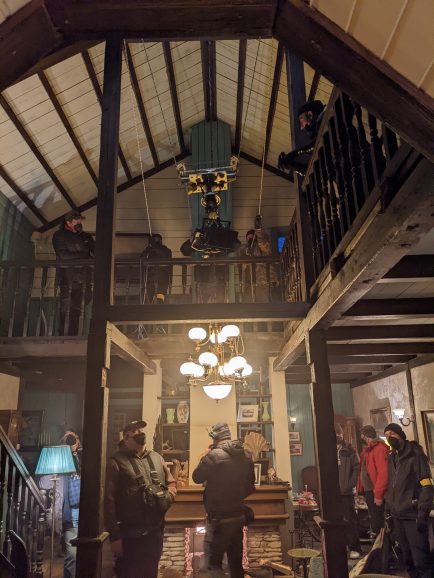
Could you run us through any camera tricks or effects you used on Prancer? Did you have to create any special camera rigs?
We wanted to rig the camera on a pulley system to achieve certain shots, due to the space restrictions. I got my key grip, Eric Aupetit, to create this very useful pulley rig which housed the Ronin 2, so it could be operated on the wheels whilst being raised or lowered in height. We were also able to manipulate its horizontal axis, by pushing and pulling the rig from either side. Due to the design of the house build on the backlot, we could flow freely from upstairs to downstairs unimpeded.
This turned out to be a super useful solution, which we used quite frequently throughout the movie. You see it in the shot where Gloria wakes up in the middle of the night overhearing her family talking downstairs
What was it like working with child and animal actors and how did you have to adapt your cinematography to suit? Any funny anecdotes/memories from set?
I have quite a friendly and relaxed approach on set, so having kids and animals around was a pleasure to be honest! They bring a levity and joy to the proceedings which keeps everybody in high spirits, especially in colder conditions.
Darcey Ewart (Gloria) was such a brilliant presence on set. She is in every page of the script and completely blew us all away with her wonderful performances, alongside her on screen grandfather (James Cromwell)
There was an incident in the mountains where our live reindeer, Elin (Prancer) saw the puppet made version of her own head, which she didn’t take a liking to, and lowered her head and sent the poor puppet hurtling into the air. A lesson learned… reindeers really don’t like puppets. Particularly of themselves!
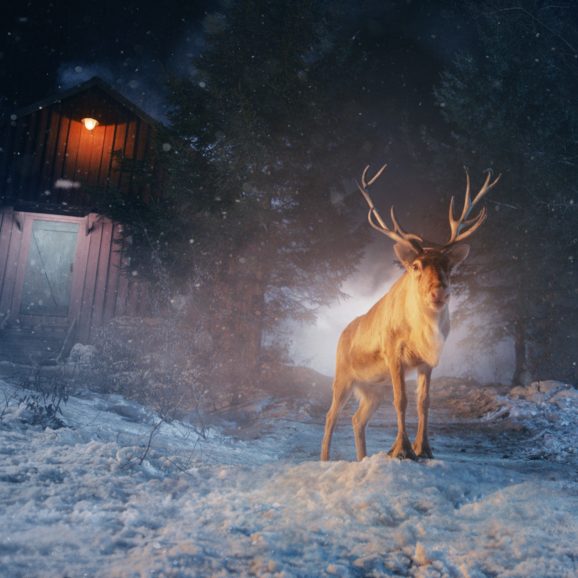
Tell us about your approach to lighting and your collaboration with the gaffer Stefan Tarzioru?
I had the pleasure of collaborating with my gaffer, Stefan Tarzioru, for the first time, and he really helped me along with the scale of the production. Whether it was cherry pickers in the mountains, or Asteras in the ceilings, he was always willing to listen to my ideas, and came up with some brilliant solutions to problems himself. I was in safe hands, and so my lighting approach didn’t change much from the usual simplicity of approach. Generally, I have a rule of less is more, as overcomplicating setups can cause more problems.
How did you tackle the challenges of the night shoots?
The night shoots were very logistically challenging. One night in particular in the gorgeous hills of Brasov, we had to light three separate locations at once, so we could roll from one set to another unimpeded. With limited numbers and equipment, I think we did an excellent job as a team to make sure we made the day. In fact, there wasn’t a single day of the shoot that we went overtime.
Who did the grade and what was their brief?
We graded the film out in Montreal at Difuze. The colourist, Nico Ilies, received the rushes and had already made a new LUT based on the show LUT that I had developed for the film by the time I arrived in the grade. This was a lovely starting point for us, and we didn’t move too far from this throughout the film, except in certain scenes where we felt things required more manipulation.
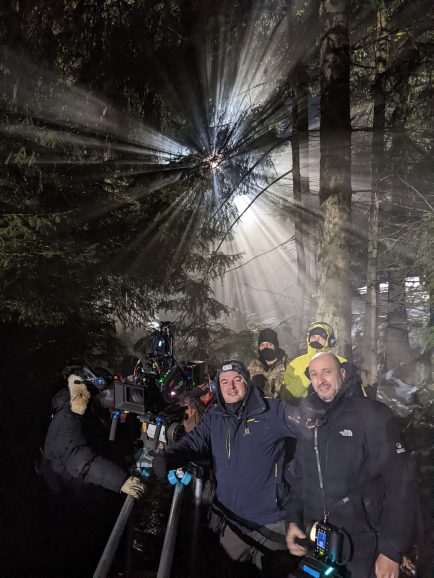
Are there any key crew members not yet mentioned with whom you collaborated closely and would like to mention?
I’d really like to mention specifically Florin Ilinca (1st AC A cam), Constantin Stan (2nd AC A cam) and Cosmin Fericean (B-cam OP) who looked after me exceptionally well, and contributed significantly to the project. Cosmin also owns Culture Film, so provided a lot of the camera and grip gear. Florin was an excellent focus puller who was always a friendly face and someone I came to rely on heavily, whilst Constantin blew me away with his knowledge and technical expertise throughout the shoot. Without the excellent Romanian team I had, this film would certainly not have been possible!
What was your proudest moment throughout the production process?
When you’re on set, and time is ticking, and decisions have to be made fast, it is reassuring to know that each day is another opportunity to be an indispensable part of a vibrant team. Simply being a useful contributor, was something I know I can be proud of.
Aside from that, I think knowing that we achieved everything that Phil wanted to achieve in terms of lighting style, camera movements and storytelling, was something we can all be proud of!
What lessons did you learn from this production that you’ll take with you onto future productions?
I’ve learned that heated gloves are amazing! More seriously, I’ve further reinforced in my mind the importance of having a good and committed team, who are working together to the same ends. With that, I hope to make more cinema with friends into the future.


